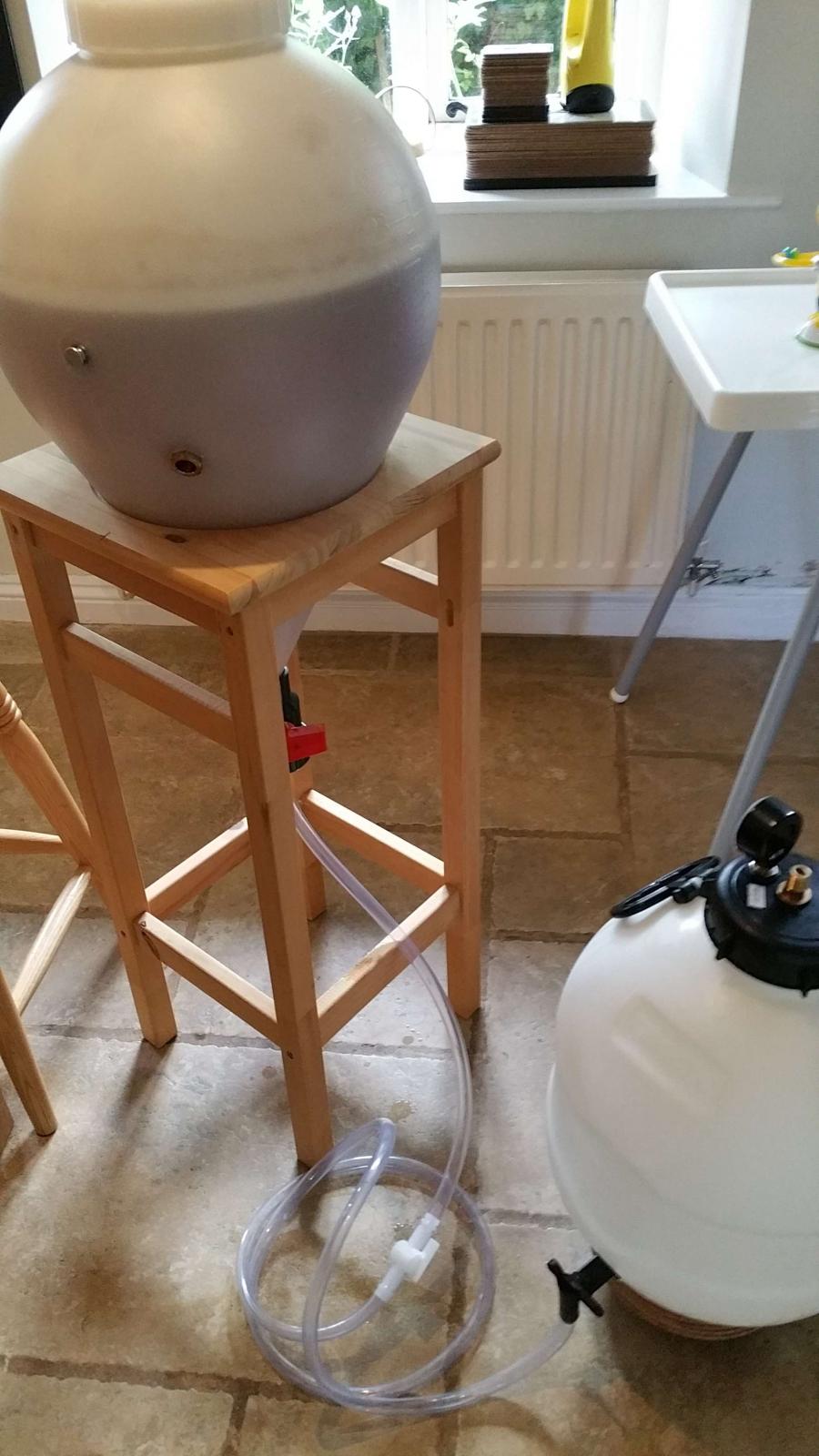Another great idea! Wow. I am going to do this the next time I rack out of the fermenter into a keg. Thanks! So basically, you put a blanket of CO2 from purging the keg into the fermenter before racking into the keg?
Here's what I do
Lift fermenter above keg.
Fill clean keg with starsan. Seat lid. Jumper liquid post to another keg. Push starsan out with co2. Pressurize to 15psi or so. Invert keg, leaning towards gas post. Depress gas poppet to get out remaining star San(I trim my gas dip tube to be flush with the keg). Add a couple more psi if I fully emptied it. Attach the hose I will use to transfer beer to keg, letting the pressure in the keg flush out the o2/air. Attach the hose to fermentor out. Run a second hose from gas post to return in fermentor(high side "sample" port in your case). You could also just get a barb elbow and replace the airlock with it. They are sold pretty cheap at the big box stores, near the brass and compression plumbing fittings.
Open fermentor valve. Beer goes in, displacing the co2 in the keg and putting it back in the fermentor, instead of air being sucked in. Once the keg is nearly full, tilt it a little to put the gas post at the highest level, allowing that extra pint to fit in. I then just open the lid clamp and seat the lid with 30 psi, then close the clamp. You don't want your lid poorly seated if you are naturally carbing.
This is a fully closed loop. The only air making it in anywhere is the little bit in the gas hose, which is negligible and can be purged if you desire. You can also unseat the liquid hose QD(when you first purge it) and attach the gas hose to purge it, then reattach the liquid QD.
If you want to prime/naturally carb in the keg, just add your priming solution to the fermentor, through the bung hole with a funnel beforehand. Doing so will also allow you to bottle directly from the keg immediately after transfer or, you can bottle any remaining beer directly from the fermentor after the keg is full.
Taking it a step further, when I bottle from a primed keg, I under prime and immediately force carb a little. That way, when I bottle, there is a little bit of co2 in the beer and it bubbles up enough to fill the headspace.
This method gets 99% of the air out of the keg, while using less co2 than purging a keg at 15psi or so multiple times.
Now, I will note that I do this with a Speidel. When I'm doing this, there is no airlock present as it is replaced with the gas return from the keg. If you are using a second spigot to return the gas to the fermentor, you could possibly have suckback occur. I don't think that it is likely, but it could happen. If that is the fact, go with replacing the airlock with a properly sized barb or price of tubing connected to the gas hose.
Hope that all makes sense...

















































![Craft A Brew - Safale BE-256 Yeast - Fermentis - Belgian Ale Dry Yeast - For Belgian & Strong Ales - Ingredients for Home Brewing - Beer Making Supplies - [3 Pack]](https://m.media-amazon.com/images/I/51bcKEwQmWL._SL500_.jpg)










